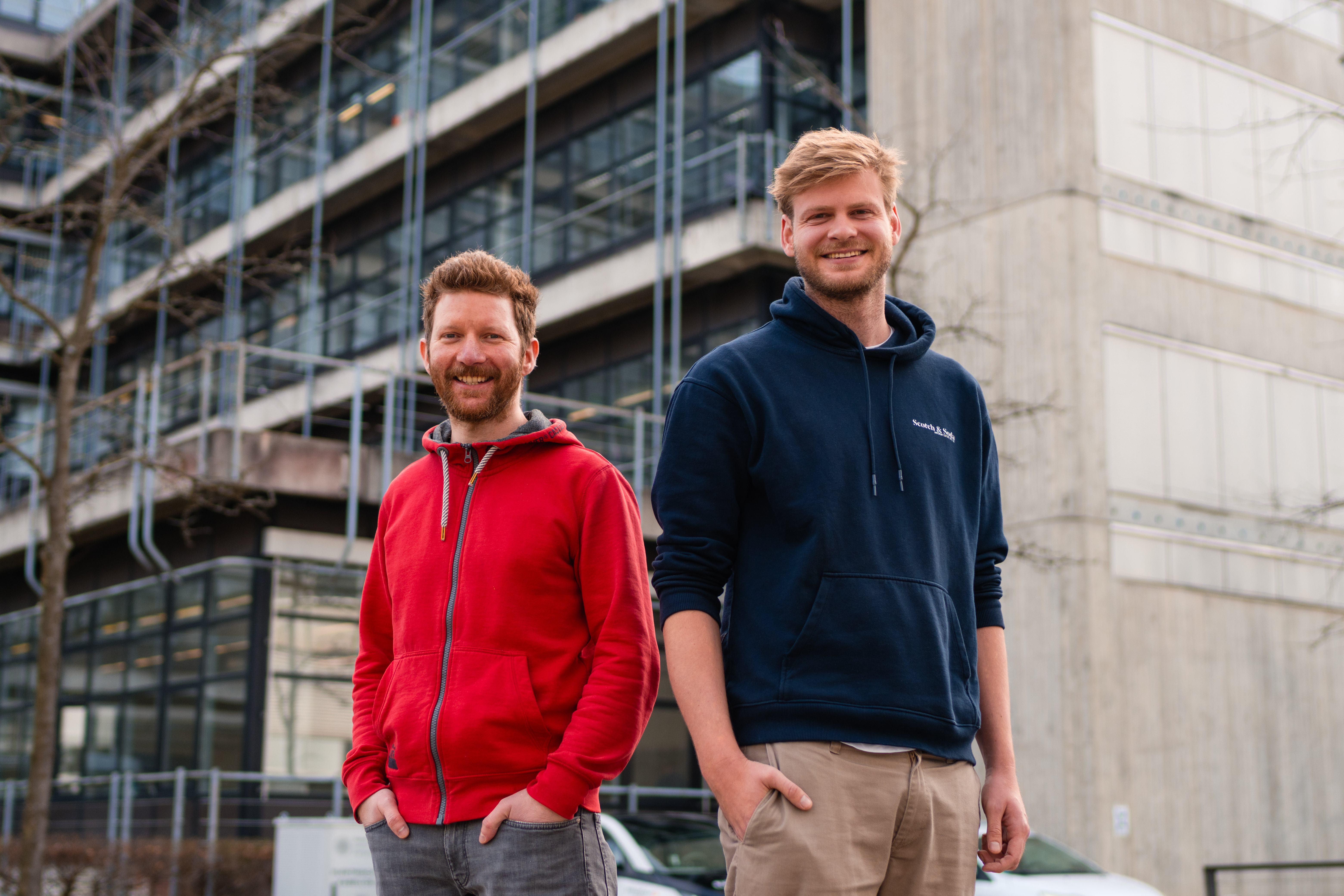Downtime means wasted time. This is just as true for electric car drivers as it is for industrial companies. However, while dynamic charging on roads still seems like a vision of the future, it has been a reality in Automated Guided Vehicles (AGVs) in factories and warehouses for a long time. It is just not being implemented across the country because the existing systems are too inefficient and costly. The DynaCharge team is currently developing a solution that is faster, more sustainable and more promising. The founders are relying on research results from the Institute of Electrical Energy Conversion (IEW), which were based on an application in road transport.

DynaCharge: Dynamic charging of Automated Guided Vehicle (AGV)
Electric car drivers dream of being able to charge on the move without stopping. The DynaCharge team has been working on this function as part of the MobiLab at the University of Stuttgart. However, in their search for a real application for dynamic charging, they have switched to industrial trucks in the industrial sector. There they want to set up their start-up with a system that is more efficient and better than existing ones. They acquired their basic entrepreneurial knowledge as part of the ICM Early Ride Program.

Less downtime, longer battery life and smaller batteries
Charging on the move is not the right description for the solution developed by Jannis Noeren and Lukas Elbracht. It is a combination of inductive charging while travelling and during short downtimes. The increased efficiency results from the optimised design of the interaction between the two charging systems. However, the details are a business secret, but the aim is to help industrial companies to manage their industrial trucks sustainably and efficiently. ‘By introducing dynamic charging systems, we are able to minimise the downtime of industrial trucks and significantly increase battery life. Smaller batteries are also required,’ explains Jannis.
The two founders have been a team since their collaboration at the IEW of the University of Stuttgart. As part of the MobiLab real laboratory, they developed the inductive charging road, which will be used one day to drive driverless shuttles across the car-free campus. ‘Jannis is more of a hardware guy, I was more concerned with the simulation of the coil design,’ says Lukas. The project raised awareness of the potential of dynamic charging. As large corporations and initiatives were already working on the application for large vehicles, they found a gap in the market for a potential start-up in industrial trucks. ‘There aren't many contactless dynamic charging systems for AGVs on the market yet and the old approaches are all more inefficient than ours,’ explains Jannis.
Pioneers for dynamic charging
As part of the ICM bottom-up project DynaCharge, they are now in the middle of developing a functional prototype that will form the basis for founding the company. The first challenge is already waiting. The founders have to combine the desire for perfection from their research with economic aspects such as cost-optimised and transferable design and safety standards. Their participation in the Early Ride programme last autumn and winter therefore came just at the right time. ‘We are very good at developing new solutions and implementing them quickly. However, we still have a lot to learn in order to build a company. We were able to clarify many of our questions about this as part of the programme,’ explains Jannis. The programme also brought them into contact with people from the industry whose knowledge should help them to avoid the biggest mistakes during the market launch. Those with economic expertise are exactly the kind of people they could well imagine as co-founders. They are determined to pursue their vision. ‘In the medium term, we want to develop an innovative and competitive system with a pilot customer,’ says Lukas. This is the starting point for their major goal of taking a leading role in the design and manufacture of dynamic loading systems in intralogistics.
To the website of the Start-up AMPLINK GmbH
Early Ride Pogram
The ICM Early Ride Program is an incubator program for innovation projects from the university environment in Baden-Württemberg with a strong focus on mobility and production. We help students, doctoral candidates and post-docs from research institutions to explore the potential of their research and awaken their entrepreneurial spirit.
- Information on the Early Ride Program
- Charging Time App - The solution to range anxiety
- BEHtec - Lightweight construction with natural fibers
- Litona - Sodium ion batteries
- MoThor Batteries - Replaceable battery cells
- ZeNo Battery Testing - Battery tests without battery
- Damper Dudes - Adaptive suspension strut for motorcycles
Contact
Benjamin Büchner
Redaktion und Öffentlichkeitsarbeit, InnovationsCampus Mobilität der Zukunft
E-Mail: medien(at)icm-bw.de









